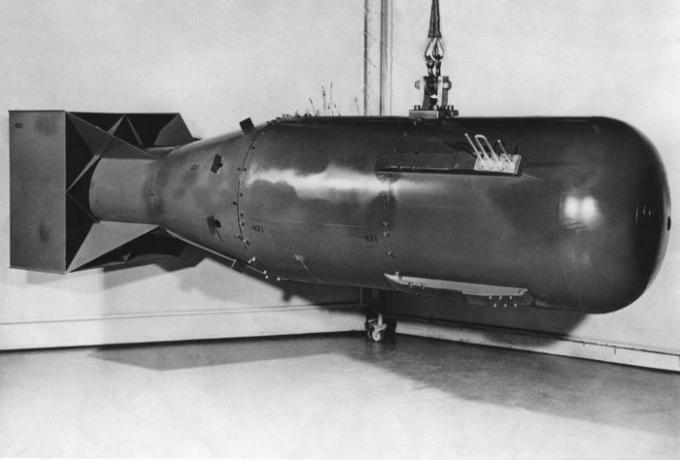There are some concepts in Physics that are often confused and/or misinterpreted, generating doubts and becoming a stumbling block in the study of this science. See below the seven most common mistakes made in the study of physics.
1) Mass equals weight
In our daily lives, it is common to hear phrases such as “my weight is 50 kg”. For everyday applications, these phrases are not wrong, but 50 kg is the mass of a body, not the weight. Weight and mass are two completely different quantities!
The mass is a scalar greatness which is the quantitative measure of a body's inertia. It can also be defined as the amount of matter in a body. Weight is the force with which the planets attract bodies that are on their surface or close to them.
Any object on the Earth's surface is subjected to the action of a force that, in a free fall, accelerates it to 9.8 m/s.2. This force is called weight force and can be defined through the Newton's second law, as a result of multiplying the body mass by the gravity value:
P = mg
To learn more, read the texts weight x mass and Difference between mass and weight.
2) The normal force is the reaction of the weight force
Normal force always arises when an object is on a surface and is understood as the force the surface makes to support the weight of the object. This definition leads us to the serious error of thinking that the normal force, according to Newton's Third Law, is a reaction to the force weight. THE Newton's Third Law predicts that action and reaction take place in different bodies. As weight is a force made by the planet on the body, and Normal is a force made by the surface on the body, these forces act on the same element and, therefore, do not form a pair of action and reaction.
3) Forgetting the measurement units
The measurement units play a fundamental role, as they characterize the various greatness existing in the world of science. When a unit of measurement is forgotten, the depicted quantity completely loses its identity. O International System of Units (SI) defines the usual unit of measure for each of the various quantities used.
Do not stop now... There's more after the advertising ;)
There are elements that are dimensionless and, therefore, do not have a measurement unit. This is the case for static and dynamic friction coefficients.
4) There are only three physical states of matter
When the question is “What are the physical states of matter?”, the answer is quick and clear: solid, liquid and gas. Still, there are not just three physical states of matter!
We can mention the existence of at least one more physical state of matter, the plasma. When electrons in a material separate from their nuclei, creating a kind of electrically conducting gas, we say that the state of that substance is plasmatic. Fluorescent lamps and TV sets are examples of equipment where there is plasma.
5) Temperature and heat are the same thing
It is very common to confuse the definitions of heat and temperature. Temperature indicates whether a body is hot or cold. Each value of this magnitude represents the degree of molecular agitation of a body. O heat it is the amount of energy that passes between two bodies when there is a difference in temperature. Therefore, temperature and heat are different concepts!
6) The question of time of fall
Can a hammer and a feather, when abandoned at the same height, reach the ground together? The answer is yes!
Common sense leads us to think that if a heavy object is dropped at the same height as a light object, the heavy one must reach the ground first, as its mass is greater. However, the equation for the free fall motion of bodies is independent of mass. The proof of this phenomenon was given by Galileo Galilei, who observed the fall of objects of different masses, purposely abandoned from the top of the tower of Pisa. It is clear that the fall time of the hammer and the pen will be equal only if the air resistance is disregarded.
7) Friction is always opposite to movement
As we study the friction, we are led to think that this force always acts opposite to the movement of bodies, but history is not quite like that! When we walk, we make a force with our supporting foot backwards and, consequently, through the law of action and reaction, we are pushed forward by the friction force, which, in this case, will have the same meaning as the movement.

Would you like to reference this text in a school or academic work? Look:
JUNIOR, Joab Silas da Silva. "Seven Most Common Mistakes Made in the Study of Physics"; Brazil School. Available in: https://brasilescola.uol.com.br/fisica/sete-erros-mais-comuns-cometidos-no-estudo-fisica.htm. Accessed on June 27, 2021.



